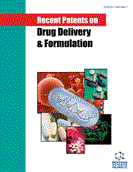Abstract
Delivery of medication to the neonatal lung using current methods is inefficient. Aerosols offer one way to improve delivery to small airways. In this in vitro work, aerosol delivery by using a micropump or a rotary valve has been evaluated in a model of the neonatal setting with a pressurised metered dose inhaler plus spacer outside of the inspiratory limb. Drug depositions were assessed by spectrophotometric analyses. Drug lung deposition was increased by adjusting the rotary valve for co-ordination between the inhalation and aerosol delivery, but this intermittent mode decreased the aerosol delivery by using the micropump. Also, decreasing the volume of spacer decreased drug deposition in test lungs by using the micropump system. At the optimum conditions, the rotary valve aerosol delivery system delivered 3.68±0.91% of the Qvar nominal dose to the test lungs, and this was 2.34±0.01% for the micropump system. In conclusion, the rotary valve aerosol delivery system provided higher amounts of drug particles to the test lungs compared to the micropump system. The advantages of these methods were that the humidity in the ventilation circuit did not affect the aerosol particles in the spacer. Further optimisation is required to improve aerosol deposition in the test lungs. The article has also a short section of recent patents relevant to aerosol delivery.
Keywords: Aerosol Delivery, humidity, neonates, pressurised metered dose inhalers, spacer.
 22
22














